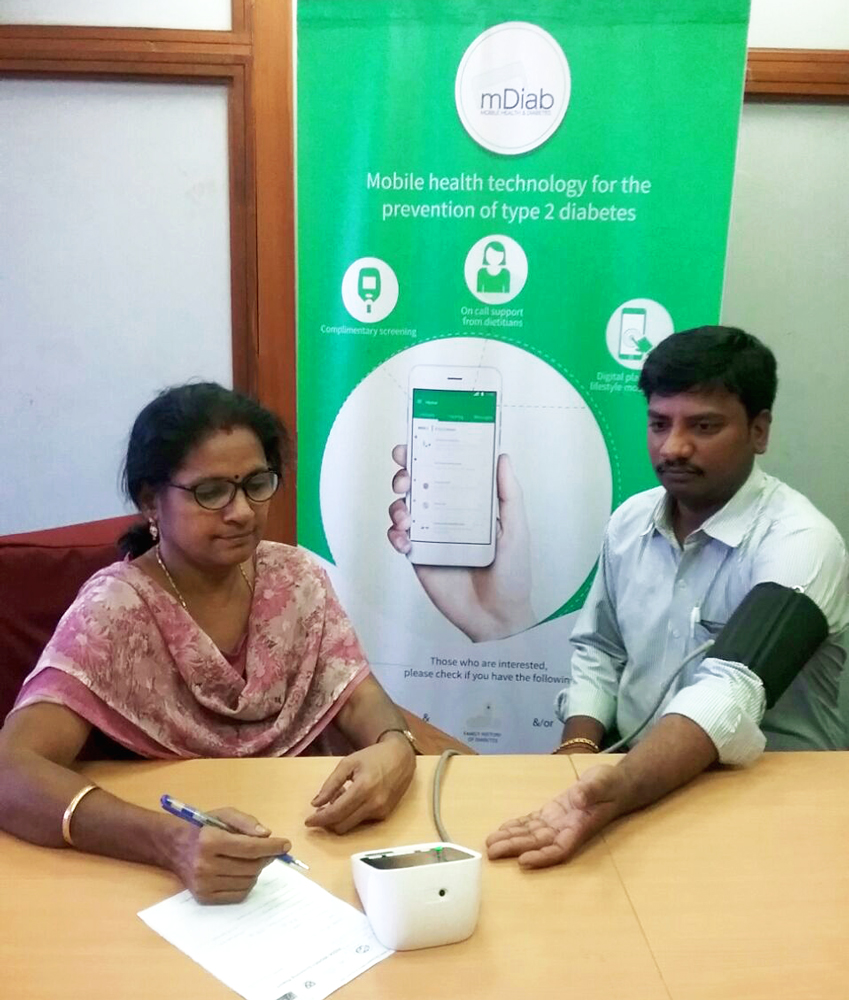
Project 4
Digital interventions for health promotion and prevention of T2D and CVD in South Asians
Previous digital interventions for health promotion and prevention of T2D and CVD have relied on computer-based internet access or mobile phones, technologies to which users have limited access (computers), or which have limited digital functionality (mobile phones). Smartphones provide an ideal combination of user-accessibility with high functionality for delivery of customised content. Smartphones have already achieved high penetration across Asia, with India alone accounting for 20% of global smartphones (~370 million users in India in 2017, >100 million smartphone sales annually, the 3rd largest global smartphone market). It is therefore timely and urgent to determine whether digital technologies can be exploited for acceptable, effective, efficient, scalable and sustainable population health interventions for prevention of T2D and CVD in South Asian men and women.
We are evaluating 3-5 digital applications for health promotion to improve cardiovascular and metabolic health amongst high-risk South Asians from across the Indian subcontinent, using a pragmatic, cluster randomised strategy. We will start by establishing service and quality specifications for digital applications for delivery of lifestyle modification and education, for prevention and control of T2D and CVD amongst South Asians. We will use these pre-specified criteria to identify and optimise products from the commercial sector, or to develop new applications within the group. We will then determine whether metabolic and cardiovascular health profiles can be improved amongst South Asians who are at high risk of T2D or CVD through:
i. digitally delivered lifestyle modification
compared to
ii. usual care, using a pragmatic clinical trial design, within the network of health observatories established in the Unit Surveillance project, from across the Indian subcontinent (Surveillance Project).
Specific objectives of the project are as follows:
1. Identify and evaluate currently available mobile applications for prevention of T2D and CVD amongst South Asians using the Mobile App Rating Scale (MARS) tool.
2. Develop two applications (apps) locally in association with an app developer.
3. Pilot Test the two newly developed applications and one or two applications from the commercial sector against primary end-points such as app usability, preferences, engagement, along with secondary end points like weight loss and/or inch loss and change in behaviour (step count/calorie intake etc.)
From the pilot study, we hope to develop a novel innovative application that can be later tested on a larger scale in a randomised clinical trial mode. We have built this as our future work once we complete the pilot study. Overall, we expect that the digital study will provide a robust evidence base for efficient, effective and scalable m-health interventions to prevent T2D and CVD amongst South Asians


